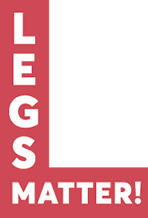The coronavirus pandemic, as with many of my colleagues within the NHS forced us to change the way we work radically in a very short time frame.
Caring for the whole leg, not just feet
During the pandemic, our podiatry service and all preventative foot protection care, musculoskeletal and minor surgery work was suspended. District nursing colleagues were faced with managing an increasing work load from patients being discharged from our acute site. Pre COVID, we had good relationships with our district nurses (DN) providing combined care for our foot ulcer patients.
At the start of the pandemic, to support our district nursing service we took patients that we normally combined wound care with to do all the lower limb wound care dressings. The focus of our work pivoted to high risk wound care; treating the whole lower limb not just the foot and ankle. Managing these vulnerable and complex cases to help and prevent hospital admissions. Some of the patients received compression therapy as part of their treatment plan either for venous leg ulcers or lymphoedema. As a podiatrist I hadn’t been trained in compression therapy – our current practice was podiatry would carry out sharp debridement, offloading and dressings as required and then the patient would then visit the District Nurse clinic which may require travelling a distance to have the compression applied.
Learning about compression
To help support my colleagues and improve my ability to help patients I received specialist training and developed my knowledge in compression In the beginning I was a little apprehensive the treatment of venous leg ulcers, lymphoedema and compression – this was new management planning to me even though I have over 20 years’ experience in wound care in the high risk foot. I was soon put at ease by my nursing colleague as we talked about the clinical reasoning, communication and holistic assessment; skills that all podiatrists have and this was the same approach as assessing a high risk foot.
To pass my competencies in compression I needed an understanding of Laplace’s Law: the inverse relationship between the radius of a patient’s limb and the pressure applied. Knowing when and when not compression is indicated. I was closely supervised while learning the compression application techniques before I was signed off. Following working through the competencies I felt empowered to know when to use compression and how to apply compression to see the correct outcomes
The benefits cross speciality working during a pandemic
This cross speciality working during the COVID pandemic has been key to continued patient care. Provided patients with seamless care – they no longer have to attend both podiatry and district nurses on the same day – something that was required pre COVID.
The crisis has accelerated the opportunity for podiatry to move wholly to digital records, while we were moving towards this approach it had but been put on hold. But pandemic has meant paper records would have to be quarantined as part of infection control. The digital wound care assessment form is used by all disciplines in Salford who are involved in the patients care. This prevents duplication of assessments such as ankle brachial pressure index. The current dressing regime, antibiotics, offloading and compliance are all visible. The form also holds valuable information for audit purposes, including the national foot ulcer data and wound, ischaemia and foot infection (WIFi) classification. As far as we’re aware this is the only multidisciplinary electronic wound care form in current use.
I want to take this opportunity to say how hard all our podiatry team have and how agile they have been and continue to be working through these unprecedented times. They have adapted quickly, demonstrating their range of transferable skills and are managing some very complex wound care in the patients home using digital virtual conversations. I‘m proud to see how they’ve coped through this time and to those who were also redeployed to intensive care promoting podiatry and the difference we can make.
The pandemic has strengthened the way forward for future wound care for our patients providing more streamlined care and it has brought specialities together in order to share knowledge, ideas and skills.
About the Author
Samantha Haycocks is a Consultant Podiatrist at Salford Royal NHS Foundation Trust
Tweet Sam @samhaycocks
Research via ResearchGate by S. Haycocks









